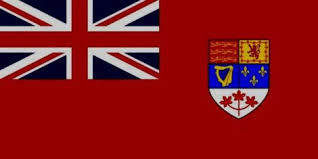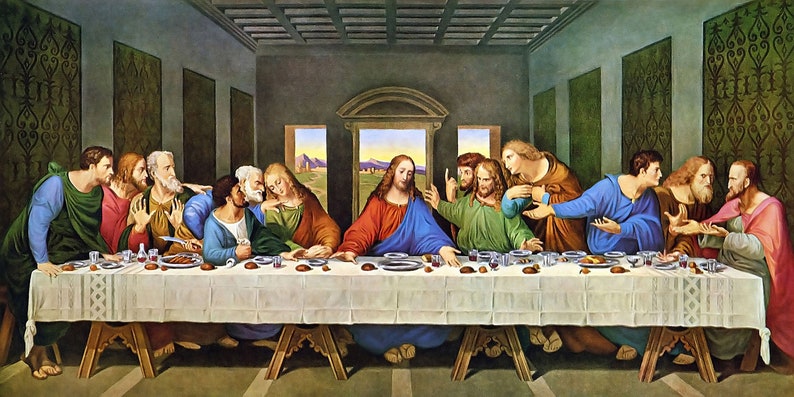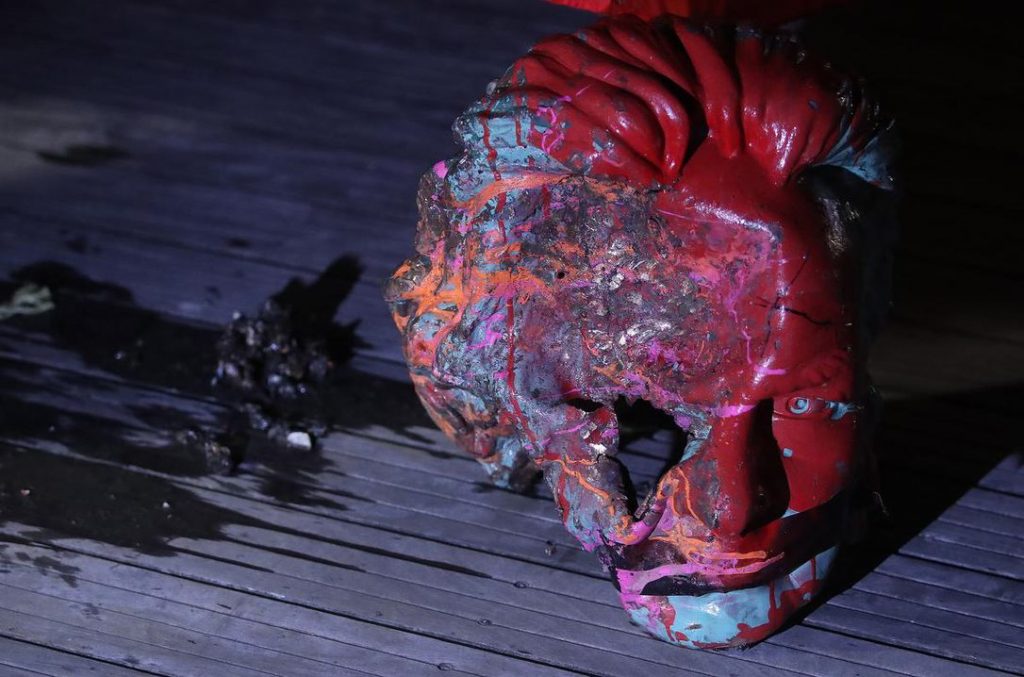Throne, Altar, Liberty
The Canadian Red Ensign

Monday, January 1, 2024
Hier Stehe Ich! (“Here I Stand (I Can Do No Other”) — Martin Luther
Every year since I started Throne, Altar, Liberty I have, on the kalends of January which is the Feast of the Circumcision of Christ on the Church Kalendar and New Year’s Day on the civil calendar, posted an essay summarizing where I stand on matters political, religious and cultural, the subjects on which I write. It is a custom I adopted from one of my own favourite writers, the late Charley Reese of the Orlando Sentinel. I have often used Dr. Luther’s famous “Here I Stand” as the title in one language or another. This year it is the German original. Each year it is a challenge to write this anew because, while I hope my views have matured they have remained basically the same. Each year I have to resist the temptation to just point to T. S Eliot’s “Anglo-Catholic in religion, royalist in politics, classicist in literature” and say ditto. I usually do make reference to Eliot’s famous self-description, which I read as a twentieth-century update of the definition of Tory that Dr. Johnson wrote for his dictionary, because it provides a handy frame on which to organize my thoughts.
Before getting into my views I will provide as usual some basic background information about myself. I am a patriotic citizen of Commonwealth Realm that is the Dominion of Canada and a loyal subject of His Majesty King Charles III as I was all my life prior to his accession of his mother of Blessed Memory, our late Sovereign Lady Queen Elizabeth II. I love my country’s traditional institutions, Loyalist history, and basically everything about Canada that the sniveling twit who currently occupies the Prime Minister’s Office either wishes we would forget or is endlessly apologizing for. I have lived all my life in the province of Manitoba, where I was raised on a farm near the village of Oak River and the town of Rivers, where I studied theology for five years at what is now Providence University College – at the time it was Providence College and Theological Seminary – in Otterbourne which is a small college town south of the provincial capital, Winnipeg, where I have lived for the almost quarter of a century since.
Am I, like T. S. Eliot an “Anglo-Catholic in religion”? If by Anglo-Catholic you mean holding the theology expressed in the Library of Anglo-Catholic Theology, the admirable collection published by John Henry Parker in the nineteenth century of the writings of the classical Anglican divines of the centuries previous including Lancelot Andrewes, the martyred King Charles I’s martyred Archbishop William Laud and the other Caroline Divines, the scholarly apologist for Trinitarian orthodoxy Bishop George Bull and the Non-Juror George Hickes, I would say yes. If you mean embracing the views of the Oxford Movement I would be more hesitant. I think that the most important thing Keble, Newman, Pusey et al. got right was that the truest and most important establishment of the Church was that by Christ through His Apostles rather than establishment by the state. I have far less sympathy for the tendency that manifested itself in some, not all, of them to look Romeward, to regret the Reformation for reasons other than that all schism that harms the visible unity of the Church is regrettable, and to regard the Anglican formularies with a “this will have to do for now” type attitude.
The Vincentian Canon, “that which is believed everywhere, at all times, and by all”, and its tests of antiquity (does it go back to the Apostles), universality (is it held throughout the Church in all regions and ages rather than particular to one time and place), and consent (was it affirmed by the Church’s leadership in a way that was subsequently received as authoritative throughout the Church) is in my view the right way of determining what is truly Catholic, not whether it has been declared dogma by the Patriarch of Rome or one of the Councils that his adherents have held since the Great Schism between East and West. I come from a family in which most of my relatives were either United Church (Presbyterian/Methodist) or Anglican, became a believer with an evangelical conversion when I was 15, was baptized by immersion in a Baptist church while a teenager and confirmed in the Anglican Church as an adult. As my theology matured I came to realize and respect the Symbols handed down from the ancient Church – the Apostles’ and Nicene (Constantinopolitan) Creeds and the Athanasian Symbol – as the basic definitions of Scriptural orthodoxy, to recognize that episcopalian Church government is not adiaphora but clearly established in the New Testament (the Apostles governed the whole Church, while it was localized in Jerusalem they exercised the authority Christ gave them to establish the order of deacons, after the Church was scattered they appointed presbyters or elders over the local Churches which seems to be something they borrowed from the synagogues, and as their ministries closed they passed on to others, Scriptural examples of which include SS Timothy and Titus their government over the Church including the power to ordain the lower orders), and that the ministers of the Church are priests (St. Paul explicitly states this of himself in the Greek of Romans 15:15) charged not with offering new sacrifices but with feeding the people of God with Christ’s One Sacrifice through the Sacramental medium of bread and wine.
Thus I am basically a High Anglican of the pre-Oxford type, with a Lutheran soteriology, and a fundamentalist-minus-the-separatism approach to basic orthodoxy who regards every article of the ancient Symbols taken literally as fundamental and the Bible as God’s written Word, by verbal, plenary inspiration, infallible and inerrant, which we are to believe and obey rather than to subject to “criticism” based on the false notion that because God used human writers to write the book of which He is the Author that it is a human book rather than a divine book. Criticism based on that false notion makes fools out of those who engage in it, whether it be the higher critics who think that the fact that Moses varied which name for God he used means that his books were slapped together by some editor after the Babylonian Captivity from previously separate sources despite the total lack of anything such as examples of these “sources” in a pre-“redaction” state of the type that would logically constitute actual evidence or the lower or textual critics who think that the most authentic text of the New Testament is not to be found in that that has been handed down in the Church as evidenced by the thousands of manuscripts she has used (these are of the Byzantine text type) but either in small handful of old manuscripts that were not in general use and were particular to one region (the Alexandrian text) or in something slapped together by text critics in the last century which can be found in no manuscript whatsoever (the eclectic text). Someone who makes the false idea that the Bible is a human book rather than God’s book the basis of his study of it will end up drawing unsubstantiated conclusions about it that no competent scholar would similarly draw about actual human books and will end up sounding like a blithering idiot. So expect me to thump the Authorized (1611) Bible as I tell you that salvation is a free gift that God has given to all us sinners in Jesus Christ, that the only means whereby we can receive it is faith, that faith is formed in us by the Holy Ghost through the Gospel brought to us in the Word and Sacrament ministered to us by the Church whose Scripturally established governors under her Head, Jesus Christ, are the bishops in whose order the ordinary governing office of the Apostles has continued to this day.
That I am a “royalist in politics” should already be evident from the second paragraph if it is not sufficiently evident from the title of my website. I will add here that I am also a monarchist. For some that will be a redundancy, the two terms being for them interchangeable. It is for the sake of others who distinguish between the two that I add that I am both. I am a much stronger monarchist than those Canadian conservatives are who are basically liberal democrats but who defend our monarchy because it is our tradition and make its non-interference with their real political ideal the sole basis of their argument. I have been instinctually a monarchist all my life. While C. S. Lewis famously said that monarchy is an idea easily debunked but those who debunk it impoverish and bring misery upon themselves (I am paraphrasing from memory, Lewis said it better than that) I have found as I have studied the matter over the years that monarchy is rationally defensible. Plato and Aristotle argued that the rule of true kings is the best of simple constitutions and I think their arguments still stand, just as I think that in our age the divisiveness, partisanship, and other evils that attend upon democratically elected government make an ironclad case for hereditary monarchy that makes the unifying figure at the head of the state one who does not owe his office to partisan politics. Thus I would say that we should be arguing that our monarchy is essential not that it is merely acceptable. The Canadian Tory classic by John Farthing, Freedom Wears a Crown, makes a strong case for monarchy’s essential role in our constitution similar to that frequently made by Eugene Forsey.
I am grateful to Ron Dart for drawing my attention to these men and their books years ago. I find little to admire in the Modern ideal of democracy and defend instead the institution of Parliament for while Parliament is, of course, a democratic institution it is also a traditional one, a concrete institution that predates the Modern Age and has long proven its worth, which to me outweighs all the flimsy arguments Moderns make for democracy. Ultimately, I have found a sure and certain foundation for monarchism in orthodox Christianity. God is the King of Kings, the Lord of Lords, the absolute Sovereign Ruler of His Creation, i.e., all other than Himself that exists. In the governance of the universe, we find the ideal form – think Plato here – of government, of which temporal earthly governments are imperfect representations and to which, the greater their conformity, the more their perfection will be. This is why the most orthodox forms of Christianity – traditional Anglicanism, Eastern Orthodoxy, traditional Roman Catholicism, and the better kind of Lutheranism – saw Christian monarchy as the highest form of earthly civilization, and the least orthodox forms that can still be seen as Christian in some recognizable sense, Puritanism and Anabaptism, are the ones that contradicted the obvious implication of the title “King of Kings” by saying “no king but King Jesus”.
It is in the sense of someone who holds the views expressed in the previous two paragraphs and not in the common partisan sense of the word that I call myself a Tory. The words “conservative” and “right-wing” as they are used today, even by most who self-apply them, have had their meaning defined for them by the very liberalism and the Left they purport to oppose. Liberalism is the spirit of the Modern Age. It consists of the demand for ever increasing liberty (in the sense of individual autonomy) and equality, despite the fact obvious to anyone with two brain cells to rub together that these two cannot be maximized at the same time. The universal homogeneity that it demands would if actualized be the ultimate form of totalitarian tyranny in which freedom, the real human good and not liberalism’s false ideal of liberty/individual autonomy, would be eliminated entirely. The Left also worships liberalism’s false gods and historically has differed from liberalism primarily in its notion of how to achieve their goal. A century ago the Left was identified primarily with socialism, the idea that all of man’s problems can be traced to economic equality arising out of the private ownership of property and are solvable by eliminating private ownership and replacing it with public ownership. From the standpoint of orthodox Christianity this is utterly repugnant because it misdiagnoses the human condition (the correct diagnosis is sin), prescribes the wrong medicine (the right medicine is the grace of God freely given to man in Jesus Christ), and is basically the second worst of the Seven Deadly Sins, Envy, disguising itself with the mask of the highest of the Christian virtues, charitable love.
Today, the Left is identified primarily with an expression arising out of American racial grievance politics, “wokeness”. “Wokeness” is like socialism in that it claims (generally falsely) to be the mouthpiece for the oppressed, but differs from socialism in that it it does not divide people into oppressor/oppressed by economic status (Marx’s “haves” and “have nots”) but by a legion of personal identities based on such things as race, sex, gender, etc. Some, such as Dr. Paul Gottfried, have argued on the basis of specific content that today’s Left is something totally different from the Left of a century ago, from the standpoint of orthodox Christianity there is a discernable continuity in the Left. Whether it speaks in terms of economics or in the terms of race and sex, the Left is an entirely destructive movement, driven by hatred of civilization as it historically has existed for not living up to the false and self-contradictory ideals of liberalism, that, whenever it has succeeded in tearing something down, has never been able to build anything good let alone better on the ashes of the good if not perfect that it destroyed. The orthodox Christian must condemn this utterly because it clearly displays the spirit of Satan who operates out of the same hatred directed towards God. Therefore I describe my orthodox Christian monarchist views as Tory and reactionary (in John Lukacs’ sense of the term, basically someone willing to think outside the Modern box, not by embracing the nihilism of post-Modernism but rather the good in the pre-Modern), preferring these terms over conservative which for the most part denotes a false opposition to liberalism and Left defined entirely by liberalism and the Left.
As for being a “classicist in literature” I think that if we take this to mean someone who seeks to learn from Matthew Arnold’s “the best that has been thought and said” this is a goal that someone with the views expressed above can recognize as most worthy to pursue with regards not just to literature and reading, but to the other elements of culture such as music and the visual arts as well. It is also a difficult one to consistently follow as many are the enticements, more so today than ever before, to distract one from the classical heights of the Great Books and the Great Tradition into the murky swamps of corporate, mass-manufactured, pop culture. I have striven to follow this goal on and off again – it makes an excellent resolution for those who do that sort of thing today – with varying degrees of success at resisting the distractions. Perversely, I have found stubborn contrariness has often been a great motivator in this regards.
I read Mark Twain’s remark that a “classic is something that everybody wants to have read and nobody wants to read” years ago and thought to myself “Sez you, Sam Clemens” and set out to read nothing but classics, persisting in this for several months. Similarly, Thomas Fleming, the former editor of Chronicles Magazine several times enriched my reading habits with remarks about about books nobody was familiar with today prompting a “Sez you, Tom Fleming” response. Today, as the Left in its “woke” form as described in the previous paragraph has laid siege to the Great Books and the Great Tradition it is more important than ever to reacquaint ourselves with “the best that has been thought and said”. This is a far better and ultimately more effective way of resisting wokeness than generating and posting any number of anti-woke internet memes could ever be. So I resolve today once again to seek to elevate my reading, listening and viewing habits in 2024 and encourage you to do the same.
Happy New Year!
God Save the King! — Gerry T. Neal


